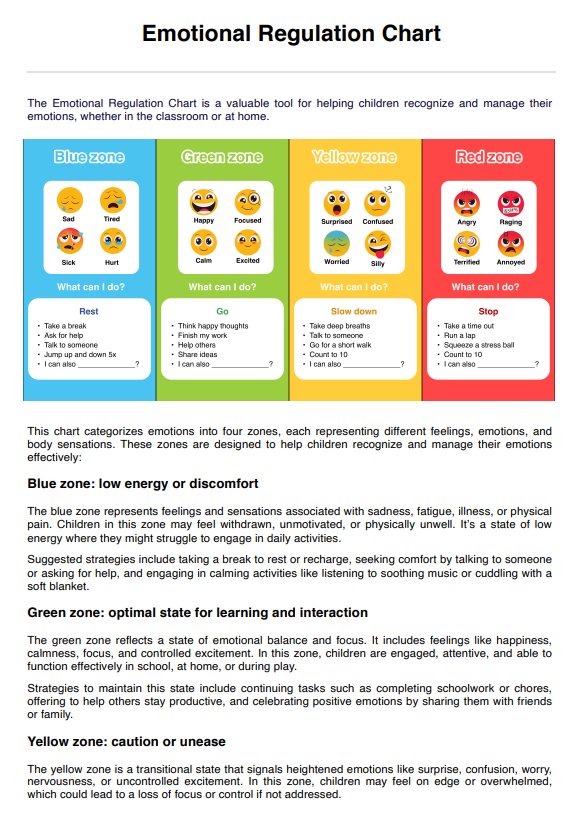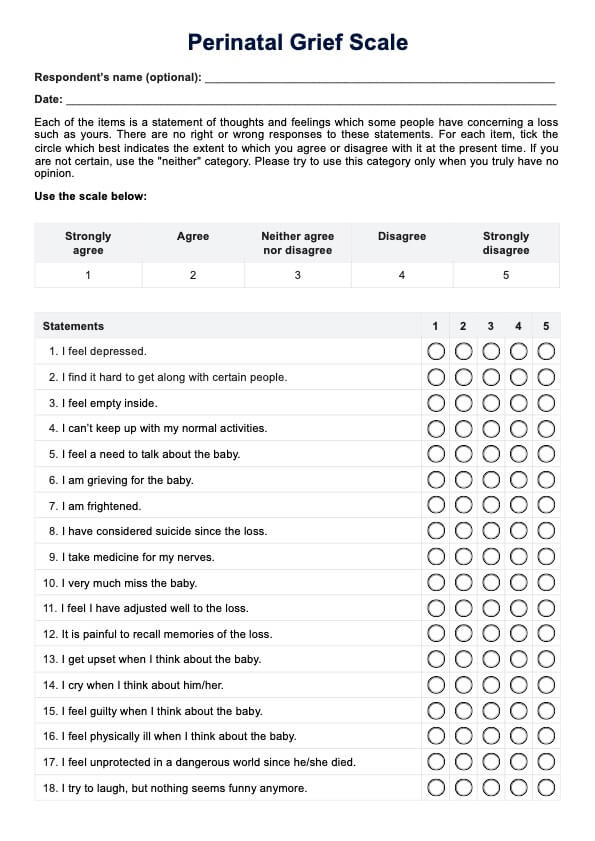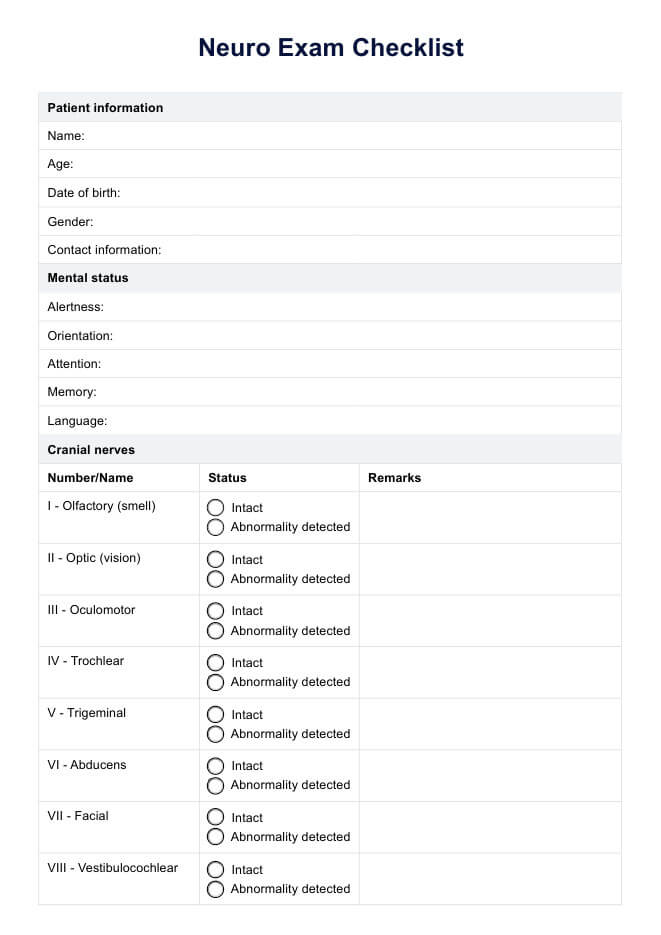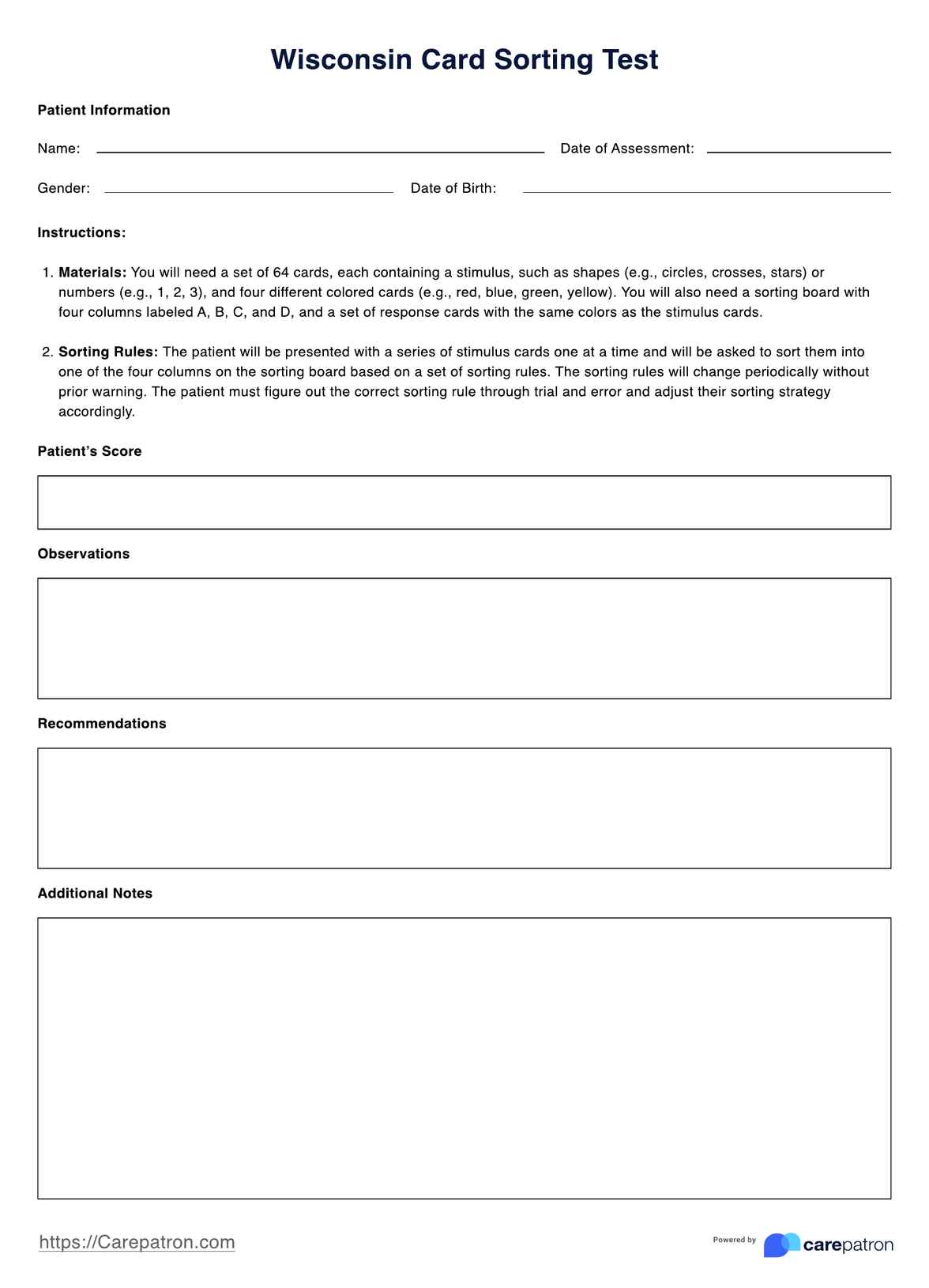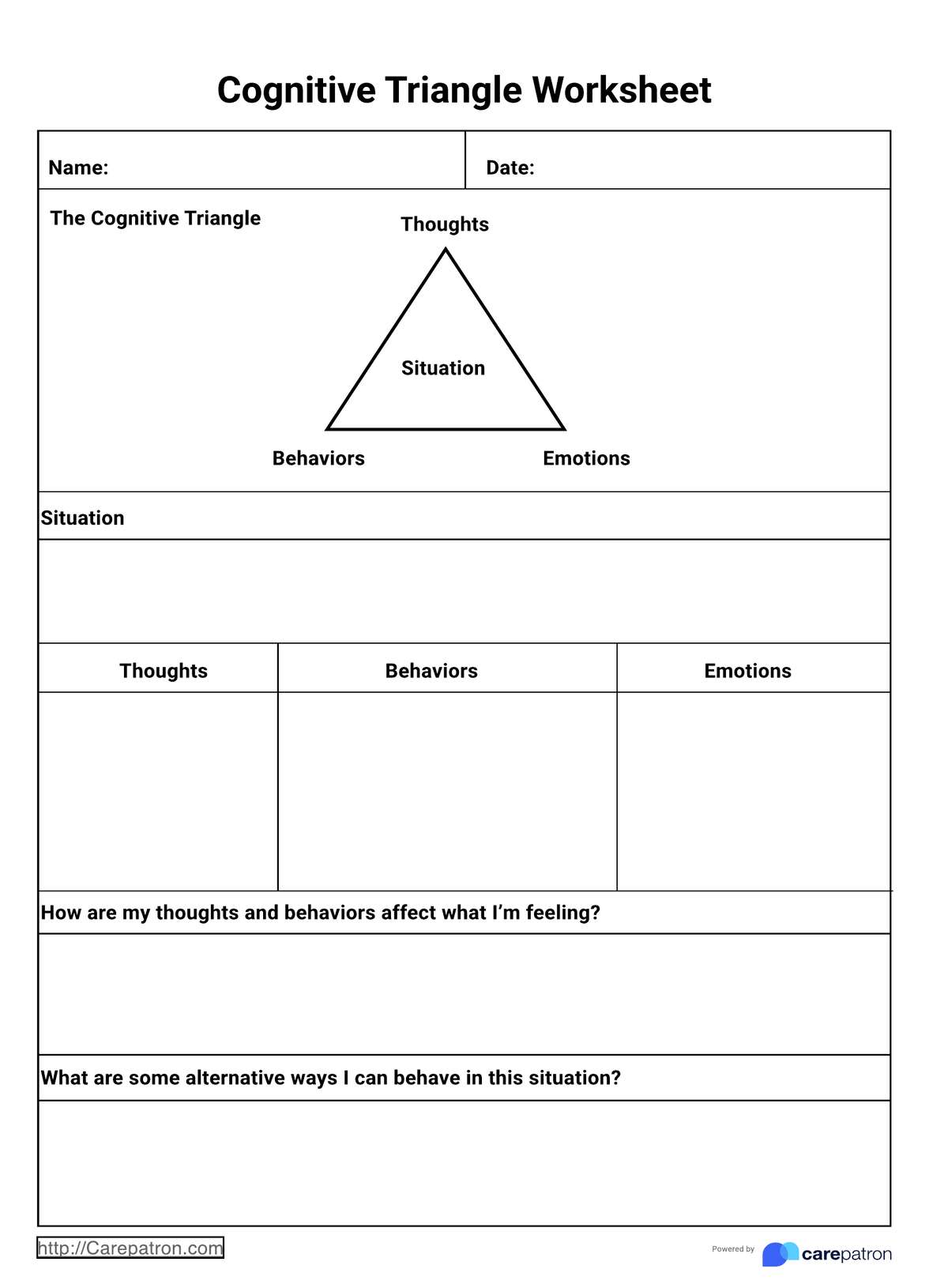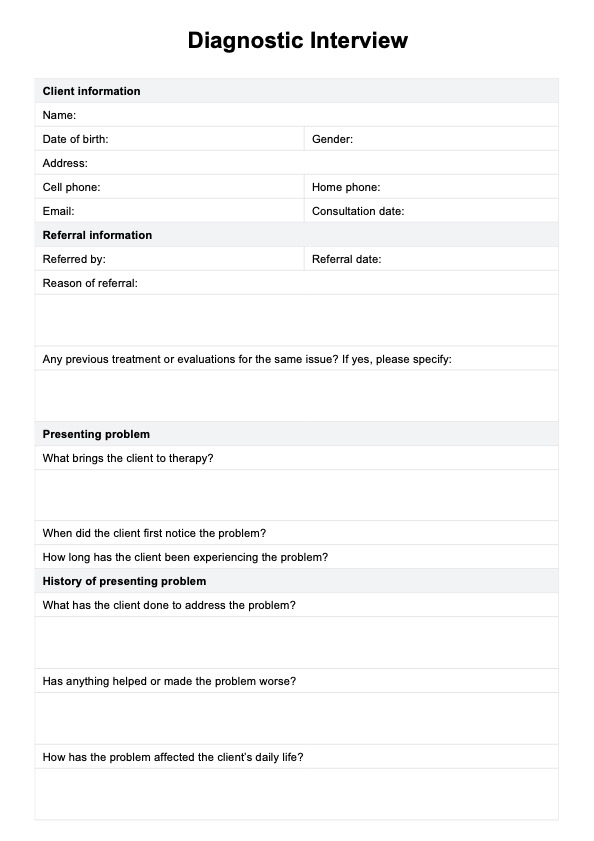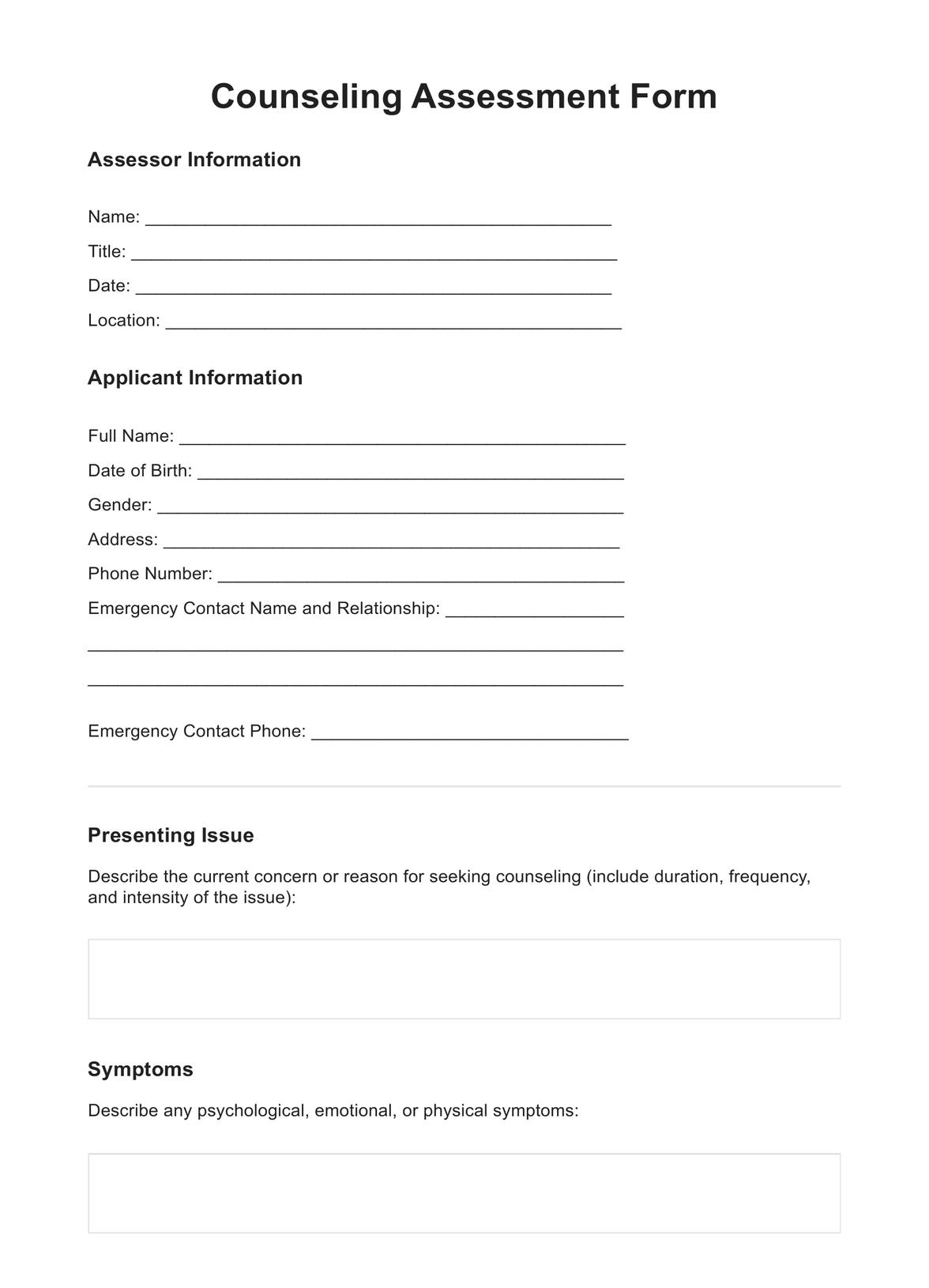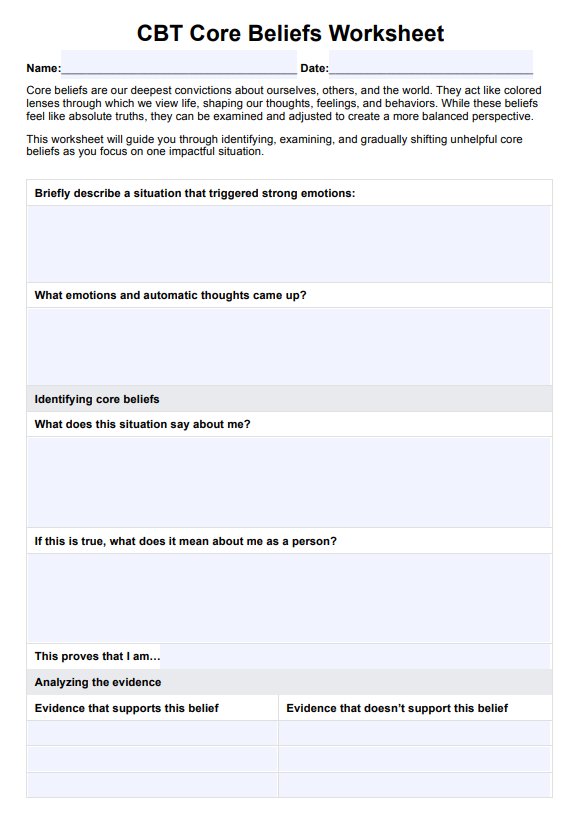SLUMS Test
If your patient is exhibiting signs of cognitive decline or dementia, conduct the SLUMS Test to examine them. Depending on the results, have them endorsed for further examination for a proper diagnosis.


What is the SLUMS Test?
The Saint Louis University Mental Status Test, or the SLUMS Test or SLUMS Exam for short, is one of the many cognitive screening tools used by healthcare providers to examine people suspected of having/experiencing symptoms of cognitive impairment, dementia, or the early stages of Alzheimer's Disease.
This test is an 11-item questionnaire that covers different facets of a person's cognitive function, such as memory, attention, orientation, language, spatial recognition, and more!
This test is quite popular, given that it is easy to administer. It only takes 10 to 15 minutes to complete (depending on the person) and can be conducted beyond a clinical setting.
Do note that the SLUMS Test is a screening tool. It is not meant to be used to diagnose people with cognitive decline or dementia. It's meant to evaluate a patient using a series of questions to see if they are exhibiting signs of experiencing cognitive decline or mild dementia. Depending on the results, the next step will always be to endorse them to specialists who can take your results as a reference, conduct more comprehensive examinations, and officially diagnose the examinee.
Now that you know what the SLUMS Test is about, it's time to learn how it's conducted and what it asks the examinee.
SLUMS Test Template
SLUMS Test Example
How to do the SLUMS Test
The SLUMS Test consists of 11 items, all of which are meant to be filled out by you, the examiner. What you will do is conduct the SLUMS Test like an interview. Before doing so, make sure to accomplish the clerical parts of the test sheet, indicating your name, the examinee's name, the exam date, the level of education the examinee has attained, and whether they are alert.
If you are wondering if it's important to note if they are alert, the answer is yes. If they are not alert, that might indicate cognitive decline. If they suddenly lose focus while you are asking them questions, that might also be a sign of cognitive decline and perhaps early signs of dementia or Alzheimer's Disease.
SLUMS Test scoring
For each question the patient answers correctly, they get a point. Here are the points associated with each question in our SLUMS Test template:
- What day of the week is it? (1 point)
- What year is it? (1 point)
- What state/city are we in? (1 point)
- Please remember these five objects: apple, pen, tie, house, and car. I will ask you about these later. (This is not scored.)
- You have USD100. You're in a store and you decide to buy a dozen apples for USD3 and a tricycle for USD20.
- How much did you spend? (1 point)
- How much do you have left? (2 points)
- Please name as many animals as you can in 1 minute. The score will depend on how many they are able to name:
- 0 to 4 animals (0 points)
- 5-9 animals (1 point)
- 10-14 animals (2 points)
- 15+ animals (3 points)
- What are the five objects I asked you to remember? (1 point for each one named, so they can score a total of 5 points.)
- I am going to give you a series of numbers and I would like you to give them to me backward. For example, if I say 42, you would say 24.
- 87 (0 points)
- 649 (1 point)
- 8537 (2 points)
- They can only score up to 2 points for this number, so they have two opportunities to score.
- This is a clock face. Please put in the hour markers and the time at ten minutes to eleven o'clock. See attached for a larger clock.
- Hand them the second sheet, which has the clock circle.
- If the sequence of the hour markers is legible and correct, they get 2 points.
- If they draw the clock hands to point at eleven o'clock, they get 2 points.
- They can score up to 4 points for this number.
- Two-part number:
- Please place an X in the triangle. (1 point)
- Which of the above figures is the largest? (1 point)
- This is also part of the second sheet.
- They can score up to 2 points for this number.
- I am going to tell you a story. Please listen carefully because afterward, I'm going to ask you some questions about it.
Jill was a very successful stockbroker. She made a lot of money on the stock market. She then met Jack, a devastatingly handsome man. She married him and had three children. They lived in Chicago. She then stopped work and stayed home to bring up her children. When they were teenagers, she went back to work. She and Jack lived happily ever after.
- What was the female's name? (2 points)
- When did she go back to work? (2 points)
- What work did she do? (2 points)
- What state did she live in? (2 points)
- They can score up to 8 points for this number.
Tally up the scores, then prepare for SLUMS scoring interpretation.
How to score the SLUMS Test:
Now that you know the questions, it's time to know more about SLUMS score interpretation. For your benefit, in the previous section, we indicated the allocated points per question and how many points they can get per item. All you need to do is tally the scores based on their answers.
Once you have tallied the scores, refer to this SLUMS test scoring table. First, consider if the patient you're evaluating for cognitive impairment and potential dementia has had a high school education or higher, or if they have less than that. If they are a high school graduate, refer to the range on the first column. Otherwise, refer to the third. Then, compare their score to the ranges indicated.

The patient's score determines what category they are in. MNCD stands for Mild Neurocognitive Disorder.
Now, note that despite the SLUMS scoring designations, this doesn't mean you can diagnose a test taker with MNCD or dementia using this assessment tool. It can only help with detecting dementia signs. What you should do based on a low SLUMS score is endorse an examinee for further testing to check if they do have MNCD or dementia so that they can get officially diagnosed and treated.
Another assessment worth conducting is the Mini Mental State Examination, which can help detect mild cognitive impairment and more severe levels of cognitive function decline.
When is it best to use the SLUMS Test?
The SLUMS examination works for detecting mild cognitive impairment and traumatic brain injury. So the most appropriate time to conduct it is during the initial stages of a particular person's treatment for cognitive decline or dementia. This is especially the case during screening stages when the person or their loved ones suspect they are exhibiting signs of developing either one or both.
Remember that this is specifically for screening, not diagnosing. But when you are at the point where you can determine that they are possibly at risk of developing MNCD or dementia, conduct the test, then endorse the examinee to another person for a more comprehensive examination of the patient.
This can also be reused to monitor the examinee. Let's say they answered the test and scored high, but when you interact with them, they exhibit cognitive deficits and signs of dementia. You can reissue this test at a later time to get another look at them because they might have been in a state where they were attentive during the first time.
If the examinee or their loved ones are still not convinced by their scores even if they passed, you can still use this to track changes in their cognitive condition over time. The same goes for tracking improvements after implementing a treatment plan.
What are the benefits of using the SLUMS Test?
The SLUMS Test itself helps you assess patients for neurocognitive disorders, but using our templates comes with more benefits on top of that. Here's why you should use our template:
It's easy and straightforward to use
Having seen what the SLUMS Test sheet looks like, you know that this assessment is easy to administer. The questions are simple enough, and the difficulty will depend on how attentive the person is and how strong their memory is.
While there are special instructions for two particular questions (the ones where you have to hand the second page to the examinee so they can draw a clock and an X inside a triangle), you don't need other specific tools to conduct this test.
It shouldn't take people more than fifteen minutes to accomplish this test.
It may help lead to early intervention
Since this is a screening tool, the SLUMS Test can lead to early intervention for those diagnosed with cognitive decline or dementia. If you can use this as soon as possible and the examinee scores low enough that they fall on the MNCD or Dementia score range, then you can have them endorsed for diagnosis and treatment as early as possible to help curb the effects.
It can track changes
This test can be used as a monitoring tool. If the patient got an official diagnosis and a treatment plan was issued for them to follow, you can use this test on the patient again to see if there are any changes in the patient, for better or worse, as they follow the treatment plan given to them.
To that, you can also determine whether the treatment plan works. If the patient is getting better, the treatment plan must be working and should be maintained. If there are no changes, or if there are but they are getting worse, then the treatment plan is not working, so part of it must be adjusted, or the whole thing must be overhauled.
Lastly, using our template is an introduction to the Carepatron platform—and if you think it's nifty, wait until you get to try out our practice management software, which contains thousands of useful templates just like it.
Commonly asked questions
The SLUMS Test is a screening test that evaluates several cognitive abilities in functions including memory, attention, orientation, language skills, and spatial recognition.
Interpreting the SLUMS score involves comparing the patient’s total score against set thresholds that indicate normal cognitive function, mild neurocognitive disorder, or potential dementia. Scores are adjusted based on the patient’s education level.
You can administer the SLUMS Test as often as needed to monitor changes in a patient's cognitive status, especially to track progression or improvement.
It should be administered based on clinical judgment, particularly when there are indications of cognitive changes or to monitor the effectiveness of treatment interventions. There is no fixed schedule, but periodic reassessment is recommended.


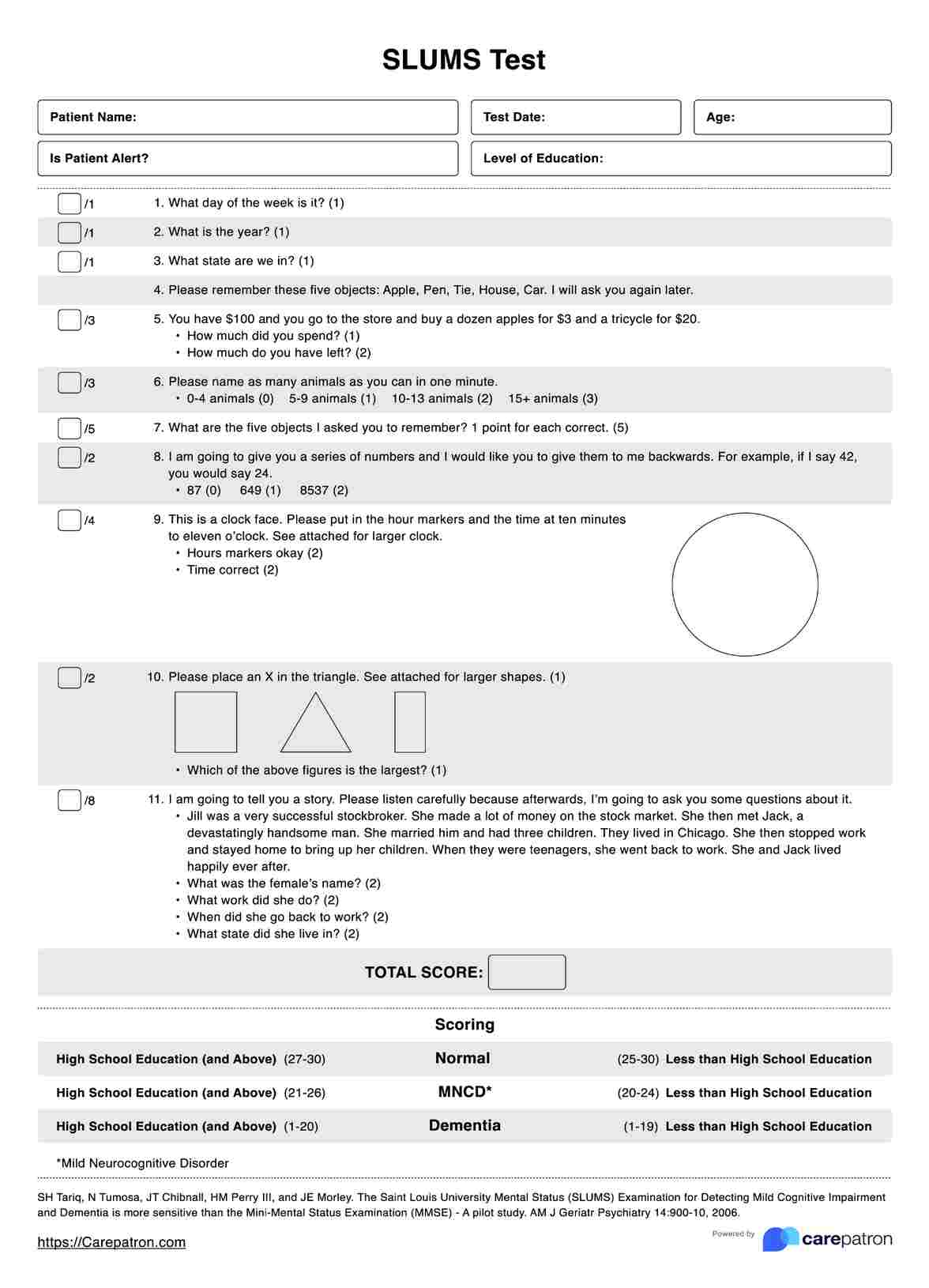
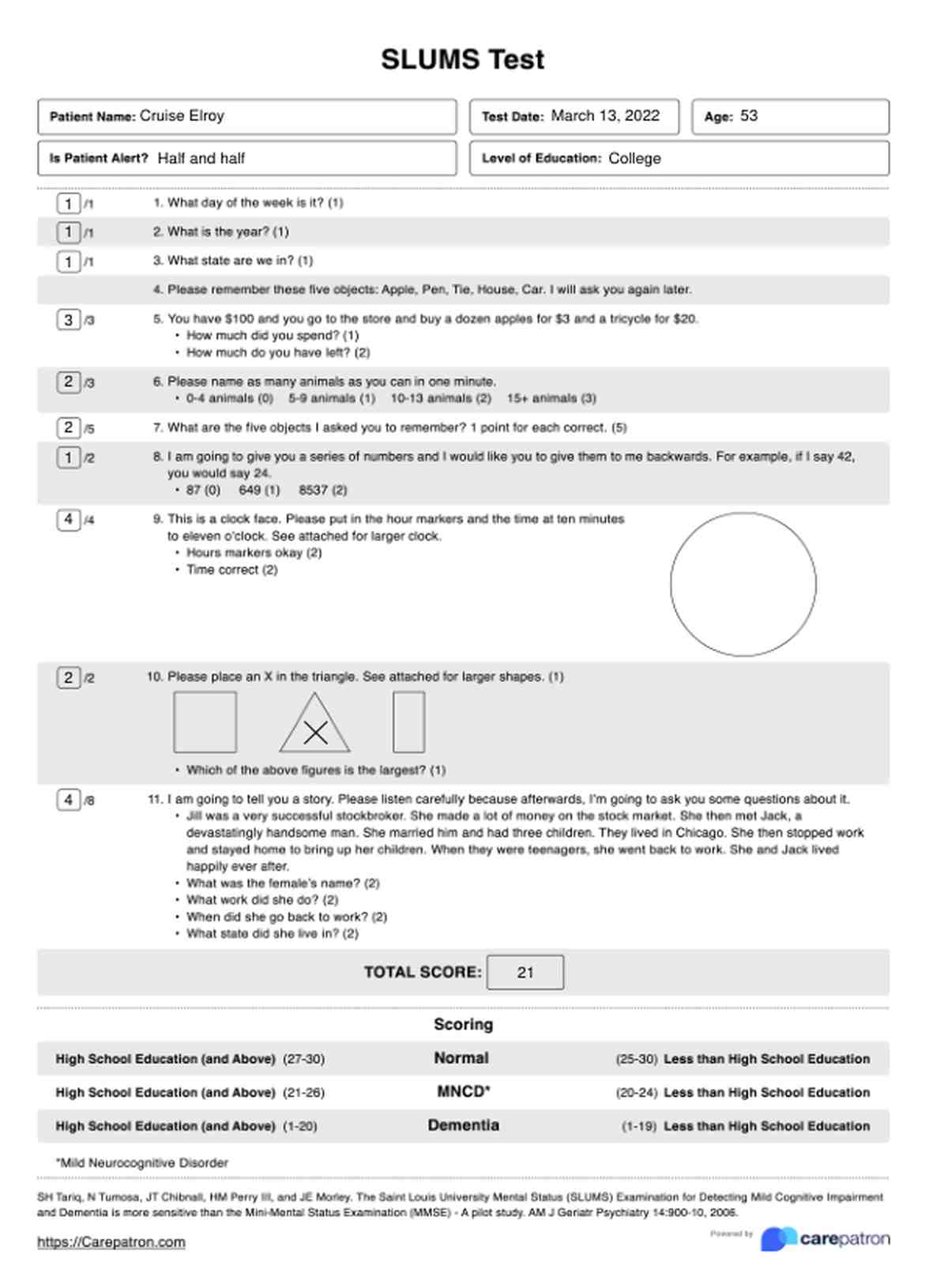

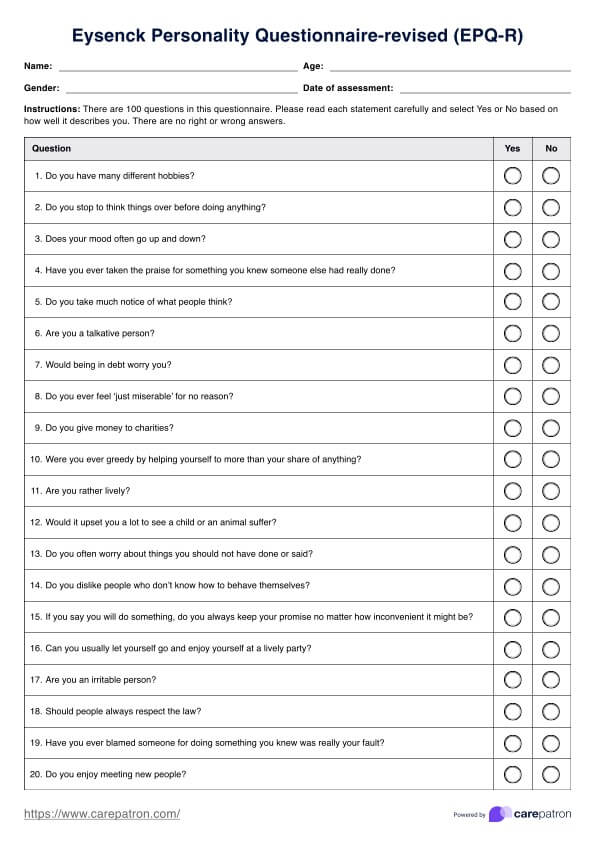
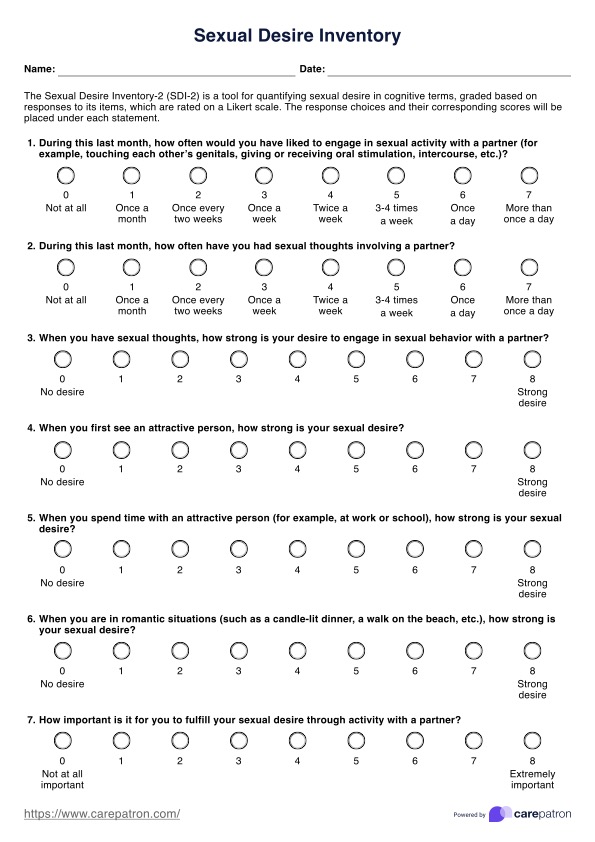
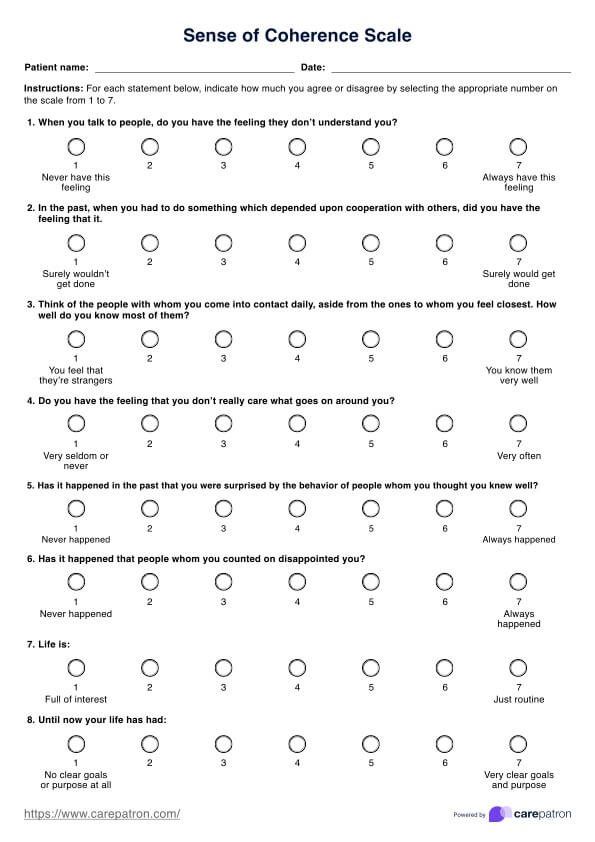










-template.jpg)





